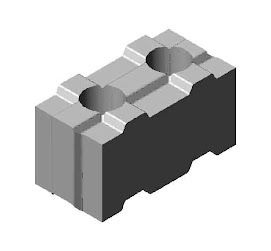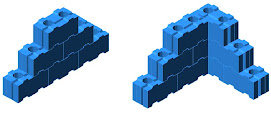Buyer's guide to kitchen flooring
From limestone to linoleum, concrete to cork, there's a host of flooring materials that can enhance the look of your kitchen. But before you set your heart on solid wood or splash out on ceramic, there are some important points to consider.
'The flooring you choose should complement your kitchen, rather than being the focal point,' says Richard Robson of Paris Ceramics. 'It should provide a platform for the rest of the room without demanding too much attention.' The ideal flooring will help to create a feeling of space and light, and if you have an open-plan living area, then consistency is crucial, so be sure to choose a material that can run all the way through. Certain products may work in the kitchen, but won't feel right for the living area, for example, and this could affect your overall decision.
'The key is to find a balance between beauty and durability,' says Tony Nicholas, managing director of Nicholas Anthony Kitchens. 'Always speak to professionals, who will be able to advise you how different floorings will fit in with your lifestyle.
Industrial style flooring
Concrete
Concrete adds a contemporary edge to a kitchen,' says Jonathan Reid of concrete surface design company White & Reid. Colours range from charcoal to antique white, and it's ideal for open-plan extensions, where it can be laid both inside and out. Concrete is fairly low maintenance once sealed, and one of its advantages is that it can be poured directly onto the existing floor without there having to be anything underneath to level it. There are also lightweight versions that can be used on upper floors, but ask a structural engineer for advice.
Resin
Resin used in residential projects has a soft and flexible finish that's seamless, comfortable to walk on, hygienic and deadens sound, too. 'A silk finish is best for kitchens,' advises John Wilson of Stratum UK resin floors. 'You can opt for gloss, which gives a real wow factor, but it doesn't have the hardness of polished marble or concrete. The gloss finish will eventually matt down and will need maintenance to bring it back to its former glory.' Remember, resin is a hand-applied system, so there might be minor flaws in the finish.
Tiles
Stone
Stone comes in such a range of sizes, colours and textures it can complement any style of kitchen,' says Richard Robson of Paris Ceramics. Choose from rich browns to muted tones in greys, greens and yellows. Even the best-quality limestone is porous, but the latest sealants are very effective and, once applied, the floor should be easy to maintain.'For a modern look, opt for matt-finish, extra-large tiles,' says Jo O'Grady at Stone Age. 'Distressed surfaces and random sizes, on the other hand, suit traditional kitchens.'
Porcelain
Porcelain is so versatile and can be made to look like anything from limestone to concrete, or even modern metallics and weaves,' says Cressida Johnstone at Surface. 'It's maintenance free and practically bomb proof, so good if you have a messy dog or kids.' The newest ranges include a wood effect, which looks indistinguishable from the real thing.
Composite Materials
With around 38 per cent quartz, quartz composite is part stone and part tile, and doesn't require sealing. One of the huge advantages is that you can have a matching work surface in the same material. To add glamour, choose a composite with metallic flecks - fabulous teamed with stainless steel.
Ceramic Tiles
Primarily made from clay and other natural materials, ceramic tiles come in many different shapes, colours and textures. They're less expensive than porcelain, but tend to be manufactured with fewer straight edges and square corners. This means that grout lines need to be thicker, resulting in a more grid-like finish. However, glazed Moroccan or Syrian tiles can still be beautiful.
Kitchen flooring need to know
Underfloor heating can be used with most modern flooring.
Stone and concrete warm up and retain heat well. But some wooden floors, particularly extra-wide boards, certain veneers and some types of adhesive, can be heat sensitive.
Most flooring is best fitted by a professional.
Some needs to be factored in at the start of the kitchen design process, whereas others can be installed afterwards. Ask the manufacturer in advance.
Even if your floor is sealed, you should still wipe up spills as soon as possible. And remember to use products recommended by the manufacturer to ensure you don't strip oils, lacquers or sealants.
Floors and Work Surfaces
Interior designer Clare Pascoe of Molten London gives us her tips for achieving the perfect flooring/work surface combination. But do you want to coordinate or contrast?
To coordinate, go for materials in the same finish (matt or gloss) and match the colours as closely as possible. Either choose a material that can be used for both worktops and floors, or match, say, a walnut floor to a rich brown stone or composite worktop.
Alternatively, contrast the finishes in the same colour, or contrast the colour in the same finish, such as a dark matt flooring with a pale matt composite worktop. You could even contrast both, such as a matt slate floor with a polished white granite worktop.
Bear in mind that kitchens are a long-term installation - make sure you won't tire of the finishes or colours you choose. Wood, wood style and other natural flooring
Solid Wood
Renewable and recyclable, boards can be a real plus when it comes to selling a house. However, solid wood may move and curl if used in a kitchen, as it's both moisture and heat sensitive. 'Decide how inert you want the floor to be,' says John Davies at Plastik Architects. 'Solid wood will change over time, so if you want your floor to stay the same, choose other materials.' Wooden floors can be finished in polyurethane lacquer, or natural linseed oil, which sets hard, seals and protects the wood. Most sealants will stand up to many years of traffic before they need reapplying. Choose any gloss level, but be aware that high gloss tends to show marks. 'Uniform boards give a modern look,' says Steve Maltby of Junckers. 'Boards with knots are more rustic.'
Engineered Boards
Constructed from multiple layers, engineered wood usually has a softwood or plywood base and a wood or wood-effect top layer. 'Water and wood are never a good combination, but whereas solid wood may gape or warp, engineered boards have a central core that stops the top and bottom layers moving,' explains Bill Worman at Element 7. Although engineered boards can feel less solid, they come in a variety of widths and finishes and are perfect for achieving a natural wood look.
Laminate Flooring
Laminate flooring is made up of synthetic materials combined with natural and recycled ingredients. It comes in a number of formats, colours and designs, including wood, stone and tile. And companies such as Pergo have now introduced laminate with antimicrobial and antistatic properties, which are ideal for kitchens. It's super-durable - resistant to staining, wear and fading - making it perfect for high-traffic areas. Prices vary hugely, but you get what you pay for - choosing cheap laminate may result in ill-fitting, bouncy boards and will always be a false economy.
Cork
A long way from the curly orange tiles of the Seventies, modern cork flooring is available in a wide range of colours, designs and finishes. Tough and naturally antibacterial, it's great for people with allergies, too. 'There are an amazing 40 million cells of air in every cubic centimetre of cork,' says Paul Heatley from cork flooring company Wicanders, 'which makes it very comfortable underfoot. It also has exceptional acoustic benefits.' Cork is harvested without damaging the tree. In fact, removing the bark means the trees live longer.
bamboo
With a higher fibre rating than any hardwood, bamboo is incredibly durable and is less likely to gape than other solid woods. Usually pretreated by the manufacturer, it can be stained or left its natural colour, then sealed with a gloss or matt lacquer. Bamboo releases 35 per cent more oxygen into the atmosphere than trees, and is a fast-growing grass, so it can be harvested every 3-5 years, making it a very eco-friendly product.
Flexible Flooring
Rubber
Silky, warm and tactile, rubber flooring comes in a huge range of colours and textures. Architects say they use rubber as its so resilient, yet it feels soft underfoot. It really is as tough as old boots, says Julie Mellor at Dalsouple. If it doesn't wear out in an airport, then it wont in your kitchen. Choose a smooth surface or low-profile studs in a kitchen as they are easier to clean. Use products and polishes recommended by the manufacturer to maintain rubber flooring, especially initially, as its softer when new.
Linoleum
Similar in feel to rubber, linoleum's ingredients, the key one being linseed oil, are all natural and sustainable. 'Natural products like this have inherent benefits,' says Therese Magill at Forbo Flooring. 'They're really tough, but at the same time tactile and warm to the touch, making them comfy underfoot.' Linoleum is also hygienic: bacteria can't live on it and it doesn't harbour dust mites, making it ideal for people with allergies.
Vinyl
Modern, high-quality vinyl is a world away from old-fashioned vinyl sheeting. Exceptionally hard wearing, designs replicate the look and feel of anything from natural materials, such as wood, limestone, slate and marble, to more contemporary finishes, including zinc and glass. It can also be warmer and quieter underfoot than the real McCoy. 'Vinyl flooring such as Amtico is a good option if you have no time to maintain a delicate surface, but still want the look of a natural material,' advises Tony Nicholas of Nicholas Anthony Kitchens
JO & ASSOCIATES
Consultant - Contractor - Interior - Producer of "BATA INTERLOK"
contact us:
Email: antonjo@bdg.centrin.net.id
Phone/Fax: +62-22-5419698
HP: +62-22-76692727 or +62-8122387982
contact us:
Email: antonjo@bdg.centrin.net.id
Phone/Fax: +62-22-5419698
HP: +62-22-76692727 or +62-8122387982
4.9.08
Guide to buying kitchen flooring by housetohome.co.uk
FOR SITE AT INDONESIA COUNTRY ONLY
DESIGN AND BUILD
for structural, architectural and interior.
Our email address: antonjo@bdg.centrin.net.id
for structural, architectural and interior.
Our email address: antonjo@bdg.centrin.net.id








